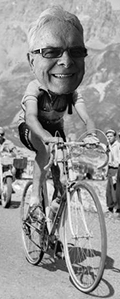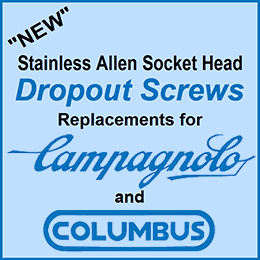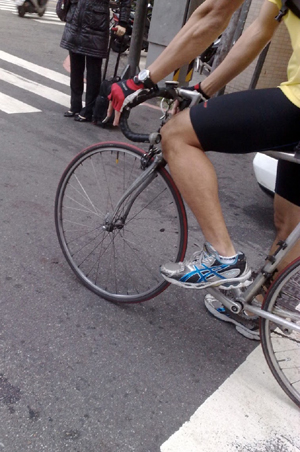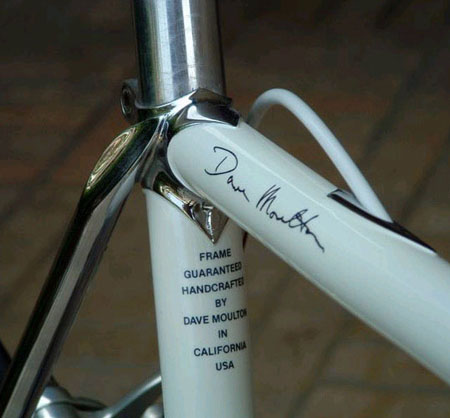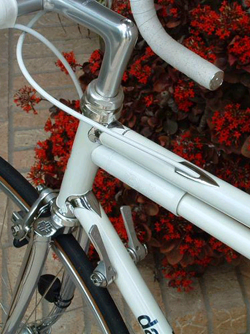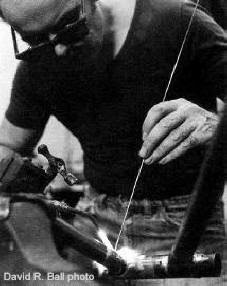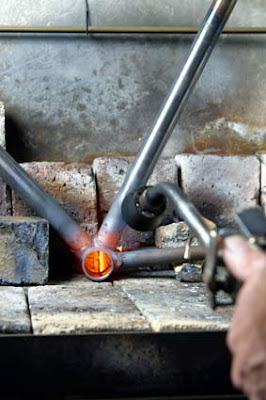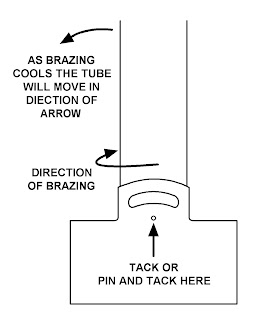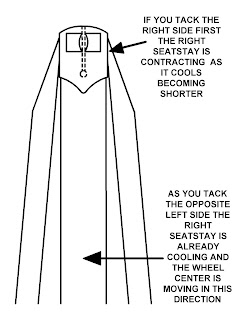Back from NAHBS
 Tue, March 6, 2012
Tue, March 6, 2012 
The North American Handbuilt Bicycle Show (NAHBS) has grown to become a wonderful bicycle institution. Back when I was in business there was no such show, I had to attend the Interbike Show, and for a small business that was a challenge; it was not an inexpensive endeavor.
With the Interbike Show, apart from being extremely costly, a small framebuilder tended to get lost amongst all the glitz and glamour of the fancy lighting and displays of the industry giants.
The NAHBS is a show just for small framebuilders, and although a few exhibitors try to upstage the competition with a fancy display, NAHBS doesn’t have that “Disneyland” glitter and feel to it; all you see is product.
I went to the show to give support to my ex apprentice Russ Denny who was re-launching the Fuso line of bicycle frames. I also got to meet many old friends, some I had not seen since the 1980s.
I first flew to San Luis Obispo to hook up with long time friend David Ball, and then we drove up to Sacramento for the show, taking with us the #001 Fuso (Built 1984.) that David owns. (Picture below.)

Excuse me if I diverse a little just to illustrate a point: David Ball is a highly skilled woodworker and has told me he would like to build guitars, but admits he would probably have to build fifty guitars before they were any good.
I see a parallel between highly skilled woodworkers who play guitar, and so try their hand at making guitars; and highly skilled metal working bike riders who are drawn towards framebuilding.
I can see David’s concern, what would be the point of making a beautiful guitar that showed off his woodworking skills if when you played it, it sounded like crap. All the exotic woods, and inlays of abalone and mother of pearl would mean nothing if it didn’t sound somewhere close to a Martin guitar which is considered the industry standard of excellence.
 However, here is where my parallel ends. How many framebuilders would have the honesty to admit they would have to build fifty frames before one would be any good?
However, here is where my parallel ends. How many framebuilders would have the honesty to admit they would have to build fifty frames before one would be any good?
And do they really need to? Case in point; just this morning checking my emails after returning from California; there was one from an owner of a custom frame I built in the early 1990s.
His opening line, “I never built my lovely frame into a bike for fear I would use it, and God forbid ruin it.”
Here is a custom frame I built in Reynolds 753, that would ride and handle as good if not better than most, and this owner will never know the joy of riding this bike.
So you see there is a market out there for “Wall Hangers.”
There is also a market for bikes that people want to ride; which is what I told Russ when he expressed certain concerns he had about going to NAHBS in the first place. “How can I compete with someone who puts between 70 and 90 hours of labor into a frame?” He told me.
My answer is, “You don’t.” The Fuso was always a bike to be raced and ridden, and this new Fuso is no different. The new steel tubing builds into a frame that is comparable in weight to other materials. Steel is practical for most riders; I can’t wait to get mine.
 (Above.) Russ Denny on the right, with the New Twin Downtube version of the Fuso in the foreground.
(Above.) Russ Denny on the right, with the New Twin Downtube version of the Fuso in the foreground.
The Fuso is still a hand built frame; it is just different enough to appeal to someone who doesn’t want to go with one of the massed produced, made in China brands. Its builder, Russ Denny has the background and experience that you can buy and ride the bike with confidence.
I saw metal craftsmanship and paint work at the NAHBS that was out of this world, I am not going to name names or even show pictures, because unless I could actually ride each one of them how can I judge a frame’s true value? I can’t simply pick it up and play it like a guitar.
When a craftsman can combine the beauty of his metalwork with the ride and handling qualities of what a bike frame should be; then he can with all honesty, call himself a framebuilder. I hope I won’t be considered unkind for saying that.
 Dave Moulton | Comments Off |
Dave Moulton | Comments Off |  Framebuilding,
Framebuilding,  Fuso
Fuso 